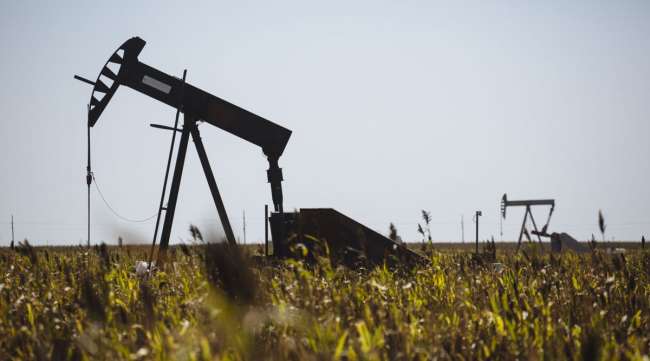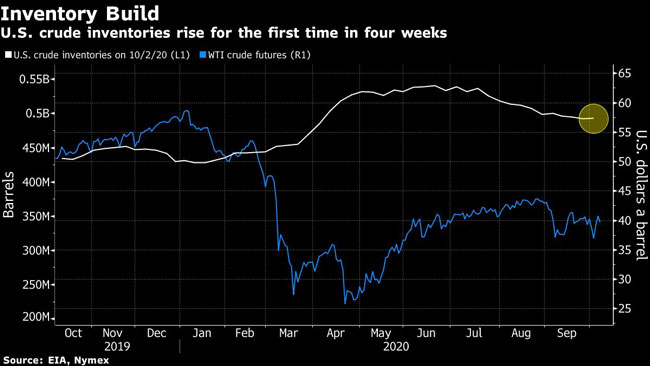Bloomberg News
Oil Drops With Rising US Supplies Adding to Stimulus Concern

[Ensure you have all the info you need in these unprecedented times. Subscribe now.]
Oil held onto losses after U.S. government data showed the first crude stockpile gain in four weeks, adding to concerns over a demand recovery with stimulus talks in limbo.
Futures in New York fell as much as 3.4% on Oct. 7. An Energy Information Administration report showed domestic crude inventories increased 501,000 barrels last week. Supplies at the nation’s biggest storage hub at Cushing, Okla., climbed to the highest level since May.
Meanwhile, U.S. President Donald Trump’s decision to suspend fiscal relief talks until after the election has cast further doubt on a recovery in energy demand amid the pandemic. Reopening plans around the world are being thrown into question as global cases top 35 million.
The storage build ends a trend of “fairly large declines,” said Rob Thummel, a portfolio manager at Tortoise, a firm that manages roughly $8 billion in energy-related assets. “There continues to be uncertainty associated with domestic demand and the need for fiscal stimulus to continue to boost the economy and correspondingly boost demand for crude oil.”

Oil’s retreat follows two sessions of gains, lifted by a workers’ strike in Norway and Hurricane Delta spurring Gulf of Mexico operators to shut output. Still, without a U.S. virus relief package, the demand outlook has only become dimmer. Governments around the world are trying to control the spread, with Boston schools pausing reopening plans and Brussels and Bucharest among the latest European capitals to impose restrictions on nightlife.
Trump in a series of Oct. 6 tweets called on Democrats to pass standalone bills. While House Speaker Nancy Pelosi signaled openness to a standalone airline relief bill in a telephone conversation with Treasury Secretary Steven Mnuchin on Oct. 7, it is a far cry from the Democrats’ $2.2 trillion proposal.
“Signs of a renewed downtrend in demand continues to worry the market that demand will be slower than previously thought, especially now that President Trump is no longer pursuing a new fiscal stimulus plan and the second wave of COVID is once again reducing economic activity,” Bart Melek, head of global commodity strategy at TD Securities, said in a note. “This implies that inventories will stay elevated for a while yet.”
RELATED: Diesel Drops to $2.387 for Fifth Consecutive Decline
Still, the EIA report showed gasoline inventories declined to the lowest level since November 2019. Gasoline supplies are now below the five-year average for the first time since March. Distillate stockpiles also fell last week, but remain at the highest seasonally in decades.
With global benchmark crude futures stuck near $40 a barrel in recent months, Saudi Arabia faces a conundrum as the Organization of Petroleum Exporting Countries and its allies decide whether to bring back more supply in line with their agreement. Vitol Group, the world’s biggest independent oil trader, expects the group won’t relax production cuts in January because demand is recovering more slowly than forecast from the coronavirus crisis.
Want more news? Listen to today's daily briefing:
Subscribe: Apple Podcasts | Spotify | Amazon Alexa | Google Assistant | More




